What's New
Displaying results 3341 - 3350 of 4924
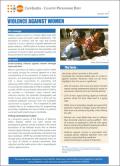
Resource | Publications,
Violence against women is a human rights issue with significant social and public health implications. Effective prevention of violence against women (VAW) and quality services for survivors depend on a clear understanding of the prevalence of violence and its dynamics.
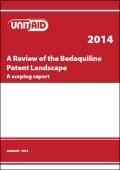
Resource | Publications,
The patent landscape in Annex I of this report sets out the key patents and patent applications for bedaquiline, including their geographical patent coverage, as of June 2011. While every effort has been made to obtain comprehensive and accurate information on the status and geographical scope of the patents covering bedaquiline, in many countries patent information is not readily available to the public or not updated on a regular basis. In addition, some patent applications may have been published only after the searches were conducted. As such, there may be other relevant patents which have subsequently been published and which are not included in this landscape. Accordingly, the information provided herein is subject to the above disclaimers.
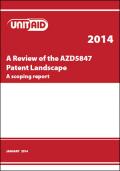
Resource | Publications,
TB treatment has become more complex, particularly with the emergence of multidrug-resistant (MDR) strains of Mycobacterium tuberculosis. There were approximately 450 000 new cases of multidrug-resistant tuberculosis (MDR-TB) worldwide in 2012.1 MDR-TB is resistant to the two most commonly used TB drugs, isoniazid and rifampicin. It requires extended treatment with second-line drugs that are less effective and have more adverse effects than isoniazid- and rifampicin-based regimens.
Given the emergence of MDR-TB, and the need to shorten treatment duration, new drugs are required. The last of the current anti-TB treatments—rifampicin—was introduced in 1963. Since then, research for new TB treatments had largely come to halt. However, in recent years the pipeline for potential new TB treatments has started to look more promising than it has for the past 50 years.
One compound that is currently in the pipeline and generating interest is AstraZeneca's investigational compound AZD5847. AZD5847 has been identified as a possible new treatment for drug-susceptible TB and/or for MDR-TB.
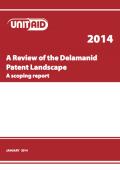
Resource | Publications,
Delamanid was discovered via a screening programme carried out by Otsuka. The compound belongs to the nitroimidazole class of compounds and is a derivative of compound CGI-17341 whose anti-TB activity was already reported in 1993. Previously known as OPC-67683, delamanid is a mycolic-acid biosynthesis inhibitor found to be free of mutagenicity and to possess highly potent activity against tuberculosis (TB), including multidrug-resistant-tuberculosis (MDR-TB).
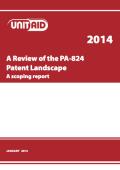
Resource | Publications,
PA-824 belongs to the nitroimidazoles class of compounds and is a derivative of compound CGI-17341 whose anti-TB activity was reported as early as 1993. PA-824 was discovered by Patho- Genesis Corporation, which was subsequently acquired by Chiron Corporation. Novartis AG acquired Chiron Corporation in 2006. PA-824 is a pro-drug, which requires reductive activation of an aromatic nitro group before it becomes effective against TB bacteria.
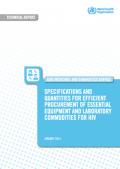
Resource | Publications,
WHO, with support from Centers for Disease Control and Prevention (CDC), developed the present tool on specifications and quantities for efficient procurement of essential equipment and laboratory commodities for HIV.
The ultimate purpose of the tool is to facilitate the efficient procurement of laboratory equipment and laboratory commodities required to:
- perform HIV diagnostic tests in adults, adolescent and children;
- monitor treatment outcomes in patients on antiretroviral therapy.
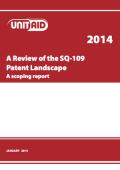
Resource | Publications,
SQ-109 falls into the class of drugs known as ethylenediamines. The compound was discovered by Sequella Inc in collaboration with the United States National Institutes of Health (NIH). A solid phase method was developed to synthesize more than 63 000 compounds based on the 1,2-ethylenediamine structure of ethambutol. Using a high-throughput screening assay, compounds were identified that affected genes activated during cell membrane repair by the TB bacilli.
Given the potential of SQ109, this report explores the patent landscape and considers possible access issues relating to the drug should it become available on the market.
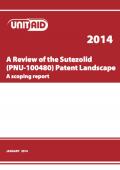
Resource | Publications,
Sutezolid belongs to the oxazolidinone class of compounds, which function as protein synthesis inhibitors and were first discovered in the mid-1980s. Linezolid was the first compound of the oxazolidinone class to be approved for treatment of TB. It is most commonly used to treat drug-resistant TB. However, linezolid’s use has been limited by toxicity concerns, particularly haematological effects after periods of treatment over 14 days.
Given the potential of sutezolid, this report explores the patent landscape and considers possible access issues relating to the drug should it become available on the market.

Resource | Fact Sheets,
In January 2014, there were 448 new HIV Ab sero-positive individuals confirmed by the STD/AIDS Cooperative Central Laboratory (SACCL) and reported to the HIV and AIDS Registry (Table 1). This is 18% higher compared to the same period last year (n=380 in 2013).
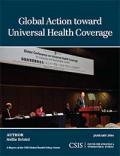
Resource | Publications,
As national incomes have risen across diverse countries--along with the burden of noncommunicable diseases--demand has intensified for quality, affordable health services. Many countries today are actively seeking to bring about universal health coverage--ensuring quality health services for all at a price that does not create undue financial pressure for individuals seeking care. The effort has stirred expanded interest and guidance from international organizations such as the World Health Organization and the World Bank, and led to new platforms for developing countries to learn from each other.
While universal health coverage will provide new funding and opportunities, including for the private sector, there is a need for dynamic, transparent negotiations among all health constituents, to forge enduring, feasible arrangements that ensure quality services reach all populations and make the best use of scarce health resources.





